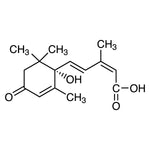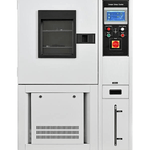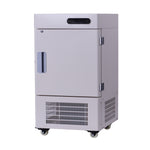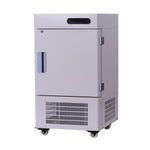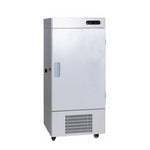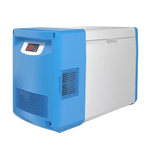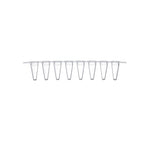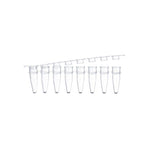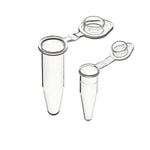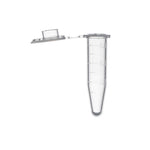You have no items in your shopping cart.
Why Do Cells Gather in the Center of 6-Well Plates?
The Science Behind Uneven Seeding — and How to Fix It
Imagine that you've just spent hours carefully preparing your cells, mixing gently, and pipetting with precision. Everything looks beautiful and perfectly even, that is until the next morning. When you get into your lab, you check your 6-well plates, and every well shows the same frustrating pattern: cells clustered right in the center, edges almost empty.
Sound familiar? You’re not alone. This “cells-in-the-middle” phenomenon is one of the most common frustrations in adherent cell culture, especially when handling multiple plates at once. This article will uncover why this phenomenon happens and discuss solutions for how to finally fix it.
1. The Real Culprits: Vibration and Thermal Convection
At first glance, it seems mysterious. But the cause is pure physics. Inside each well, your culture medium acts like a miniature pond. When there’s vibration or uneven heating, the liquid starts to move. Unfortunately, even slight mechanical vibrations from an incubator fan or compressor can generate standing waves on the liquid surface. These waves push suspended cells toward the center, where they settle.
The next problem is thermal convection that occurs when a room-temperature plate is placed into a 37°C incubator — the bottom warms first. The resulting convection flow moves liquid — and the cells within it — inward and upward, creating the same central aggregation pattern. This problem worsens when you're handling multiple plates at once because the longer some of them sit out, the more uneven the effects become.
2. Experimental Factors: Timing, Volume, and Handling Make It Worse
Other issues stem from laboratory procedure as opposed to natural phenomena. When seeding multiple 6-well plates, timing differences between the first and last plates can exceed 10–15 minutes. During that window, cells begin to settle unevenly — some attach early, some remain in suspension — and when combined with vibration and temperature gradients, the result is inconsistent attachment.
Too much medium also makes the problem worse. A higher liquid depth increases convection and slows sedimentation, allowing cells to keep moving for longer before adhesion.
3. How to Fix It & Why It Works
Our team has developed a solution for fixing this all-too-common laboratory annoyance.
First, let seeded plates rest flat for 20–30 minutes at room temperature before incubation. When you move cold plates directly into a warm incubator, the liquid heats unevenly from the bottom up. This drives convection currents that sweep cells toward the middle before they can attach. Letting plates rest allows cells to sediment naturally and begin forming early adhesion bonds. Once those bonds form, the cells are far less likely to drift when temperature changes occur.
Second, use pre-warmed medium and pre-warmed plates. A small temperature gradient — even 5–10°C — can produce measurable density-driven flow within each well. Pre-warming both the culture medium and the plastic plate keeps everything thermally stable, preventing the initial convective “swirl” that drives cells inward.
Third, ensure incubator shelves remain stable and level. Mechanical vibration is one of the most underestimated variables in cell culture. A slightly loose shelf or fan vibration can create slow oscillations that herd floating cells toward the center. Use a spirit level to check alignment, tighten shelf supports, and avoid stacking too close to the fan or compressor area. If you suspect vibration, place a dish of water on the shelf and observe the surface — even subtle ripples mean movement that could affect your wells.
Fourth, avoid stacking too many plates too soon. Stacking saves space but introduces uneven heat and airflow. The lower plate warms faster, creating micro-convection currents that disturb upper layers. If possible, leave plates unstacked for the first 1–2 hours so attachment begins under uniform conditions. Once the cells have adhered, stacking becomes much less risky.
Fifth, choose plates that help, not hinder. Even perfect technique can’t overcome bad plastic. Some low-cost 6-well plates have slight curvature or inconsistent surface energy, creating “bowl-shaped” wells that naturally drive medium — and cells — to the center. A high-quality, TC-treated 6-well plate eliminates this problem with flat, hydrophilic surfaces that promote even adhesion across the entire well.
And of course, make sure your plates aren’t part of the problem. Biofargo proudly carries TC-treated 6-well plates featuring an ultra-flat, hydrophilic surface that promotes uniform attachment — no “bowl effect,” no pooling in the center.
When your plates are consistent, so are your results.Discover Biofargo 6-Well Cell Culture Plates.
Cells gathering in the middle of your 6-well plates isn’t bad luck — it's just physics. Understanding the subtle roles of vibration, convection, and surface chemistry turns frustration into control. Combine thoughtful technique with reliable, precision-made cultureware, and your cells will reward you with even attachment and reproducible data. Because in cell culture, consistency starts with the plate.

